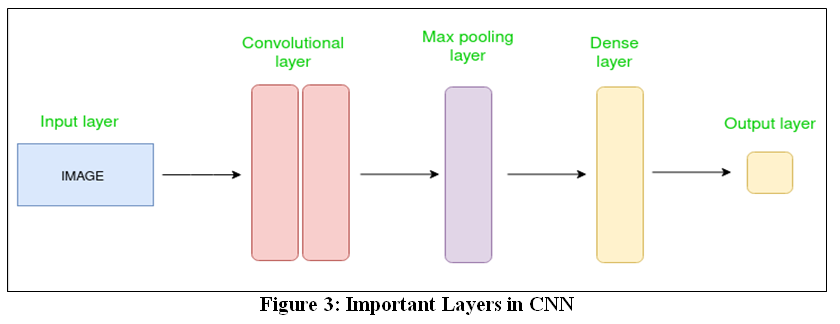Leveraging Deep Learning for Accurate Classification of Skin Disease Images
DOI:
https://doi.org/10.71229/njemcs.v1i2.2Keywords:
Deep Learning Techniques , Resnet50-CNN, CNN, Image ProcessingAbstract
This paper leverages deep learning techniques to address the complex task of classifying ten distinct types of skin diseases. A comprehensive dataset comprising 27,200 images was utilized to train and evaluate a convolutional neural network (CNN) model based on the ResNet50 architecture. To ensure a rigorous assessment, the dataset was split into training (80%), validation (10%), and testing (10%) subsets. The ResNet50-based CNN was trained extensively and achieved a classification accuracy of 92% on the test set, demonstrating strong predictive performance. These results highlight the potential of deep learning to support healthcare professionals by enabling automated and accurate skin disease classification. This paper contributes to the growing field of intelligent diagnostic systems aimed at improving early detection and treatment planning in dermatology.
References
[1] A. Hong, R. A. Zampieri, J. J. Shaw, L. M. Floeter-Winter, and M. F. Laranjeira-Silva, "One health approach to leishmaniases: Understanding the disease dynamics through diagnostic tools," Pathogens, vol. 9, no. 10, p. 809, 2020.
[2] V. R. Allugunti, "A machine learning model for skin disease classification using convolution neural network," Int. J. Comput., Program. Database Manage., vol. 3, no. 1, pp. 141–147, 2022.
[3] C. C. Zouboulis, C. A. Stratakis, G. P. Chrousos, and C. A. Koch, "Metabolism and skin diseases," Rev. Endocr. Metab. Disord., vol. 17, pp. 241–246, 2016.
[4] B. Shetty et al., "Skin lesion classification of dermoscopic images using machine learning and convolutional neural network," Sci. Rep., vol. 12, no. 1, p. 18134, 2022.
[5] A. Aboulmira, H. Hrimech, and M. Lachgar, "Ensemble learning methods for deep learning: Application to skin lesions classification," in Proc. 2022 11th Int. Symp. Signal, Image, Video Commun. (ISIVC), 2022, pp. 1–6.
[6] V. Senthil, V. Shreyaa, and V. Kothandapany, "Deep learning and rules-based hybrid approach to improve the accuracy of early detection of skin cancer," Authorea Preprints, 2022.
[7] G. M. Rao, D. Ramesh, P. Gantela, and K. Srinivas, "A hybrid deep learning strategy for image based automated prognosis of skin disease," Soft Comput., pp. 1–12, 2023.
[8] L. F. Li, X. Wang, W. J. Hu, N. N. Xiong, Y. X. Du, and B. S. Li, "Deep learning in skin disease image recognition: A review," IEEE Access, vol. 8, pp. 208264–208280, 2020.
[9] B. Shetty, R. Fernandes, A. P. Rodrigues, R. Chengoden, S. Bhattacharya, and K. Lakshmanna, "Skin lesion classification of dermoscopic images using machine learning and convolutional neural network," Sci. Rep., vol. 12, no. 1, p. 18134, 2022.
[10] K. Yu, M. N. Syed, E. Bernardis, and J. M. Gelfand, "Machine learning applications in the evaluation and management of psoriasis: A systematic review," J. Psoriasis Psoriatic Arthritis, vol. 5, no. 4, pp. 147–159, 2020.
[11] S. Haggenmüller et al., "Skin cancer classification via convolutional neural networks: Systematic review of studies involving human experts," Eur. J. Cancer, vol. 156, pp. 202–216, 2021.
[12] A. Esteva et al., "Dermatologist-level classification of skin cancer with deep neural networks," Nature, vol. 542, no. 7639, pp. 115–118, 2017.
[13] A. Esteva, B. Kuprel, R. A. Novoa, J. Ko, S. M. Swetter, H. M. Blau, and S. Thrun, "Dermatologist-level classification of skin cancer with deep neural networks," Nature, vol. 542, no. 7639, pp. 115–118, 2017.
[14] H. A. Haenssle et al., "Man against machine: Diagnostic performance of a deep learning convolutional neural network for dermoscopic melanoma recognition in comparison to 58 dermatologists," Ann. Oncol., vol. 29, no. 8, pp. 1836–1842, 2018.
[15] P. Tschandl et al., "Comparison of the accuracy of human readers versus machine-learning algorithms for pigmented skin lesion classification: An open, web-based, international, diagnostic study," Lancet Oncol., vol. 20, no. 7, pp. 938–947, 2019.
[16] Q. T. Huynh et al., "Automatic acne object detection and acne severity grading using smartphone images and artificial intelligence," Diagnostics, vol. 12, no. 8, p. 1879, 2022.
[17] C. Y. Zhu et al., "A deep learning based framework for diagnosing multiple skin diseases in a clinical environment," Front. Med., vol. 8, p. 626369, 2021.
[18] A. Demir, F. Yilmaz, and O. Kose, "Early detection of skin cancer using deep learning architectures: ResNet-101 and Inception-V3," in Proc. 2019 Med. Technol. Congr. (TIPTEKNO), Oct. 2019, pp. 1–4.
[19] C. Barata et al., "A reinforcement learning model for AI-based decision support in skin cancer," Nat. Med., pp. 1–6, 2023.
[20] S. Liu, Z. Zhuang, Y. Zheng, and S. Kolmanič, "A VAN-Based multi-scale cross-attention mechanism for skin lesion segmentation network," IEEE Access, 2023.
[21] Z. Zhao et al., "A novel convolutional neural network for the diagnosis and classification of rosacea: Usability study," JMIR Med. Inform., vol. 9, no. 3, p. e23415, 2021.
[22] P. Arora, N. Sharma, P. Bhatt, and A. Saxena, "Skin lesion segmentation using deep convolutional networks," in Concepts and Real-Time Applications of Deep Learning, pp. 111–122, 2021.
[23] N. Tyagi et al., "Skin cancer prediction using machine learning and neural networks," in Proc. 2022 5th Int. Conf. Contemp. Comput. Inform. (IC3I), Dec. 2022, pp. 271–275.
[24] J. Rudelius and E. Zetterström, "The importance of data when training a CNN for medical diagnostics: A study of how dataset size and format affects the learning process of a CNN," 2020. [Online]. Available: [Exact source not specified].
[25] M. A. Kassem, K. M. Hosny, R. Damaševičius, and M. M. Eltoukhy, "Machine learning and deep learning methods for skin lesion classification and diagnosis: A systematic review," Diagnostics, vol. 11, no. 8, p. 1390, 2021.
[26] Y. Nie et al., "Recent advances in diagnosis of skin lesions using dermoscopic images based on deep learning," IEEE Access, 2022.
[27] A. Salari, A. Djavadifar, X. Liu, and H. Najjaran, "Object recognition datasets and challenges: A review," Neurocomputing, vol. 495, pp. 129–152, 2022.
[28] K. C. Lee, J. Dretzke, L. Grover, A. Logan, and N. Moiemen, "A systematic review of objective burn scar measurements," Burns Trauma, vol. 4, 2016.
[29] H. Wu et al., "A deep learning, image-based approach for automated diagnosis for inflammatory skin diseases," Ann. Transl. Med., vol. 8, no. 9, 2020.
[30] L. H. Shehab, O. M. Fahmy, S. M. Gasser, and M. S. El-Mahallawy, "An efficient brain tumor image segmentation based on deep residual networks (ResNets)," J. King Saud Univ.–Eng. Sci., vol. 33, no. 6, pp. 404–412, 2021.
[31] "File:ResNet50.png - Wikimedia Commons," https://commonsikimedia.org/wiki/File:ResNet50.png (accessed Apr. 17, 2025).
[32] I. Promus, "Skin diseases image dataset," Kaggle, https://www.kaggle.com/datasets/ismailpromus/skin-diseases-image-dataset (accessed Apr. 17, 2025).
[33] N. Hameed, A. M. Shabut, and M. A. Hossain, "Multi-class skin diseases classification using deep convolutional neural network and support vector machine," in Proc. 2018 12th Int. Conf. Softw., Knowl., Inf. Manage. & Appl. (SKIMA), Dec. 2018, pp. 1–7.
[34] A. F. Sönmez, S. Çakar, F. Cerezci, M. Kotan, İ. Delibaşoğlu, and Ç. İ. T. Gülüzar, "Deep learning-based classification of dermoscopic images for skin lesions," Sakarya Univ. J. Comput. Inf. Sci., vol. 6, no. 2, pp. 114–122, 2023.
[35] A. F. Sönmez, S. Çakar, F. Cerezci, M. Kotan, İ. Delibaşoğlu, and Ç. İ. T. Gülüzar, "Deep learning-based classification of dermoscopic images for skin lesions," Sakarya Univ. J. Comput. Inf. Sci., vol. 6, no. 2, pp. 114–122, 2023.
[36] R. A. I. Almashhadani, G. C. Hock, F. H. B. Nordin, and H. N. Abdulrazzak, "Electroluminescence images for solar cell fault detection using deep learning for binary and multiclass classification," Int. J. Electr. Electron. Eng., vol. 11, no. 5, pp. 150–160, 2024.

Downloads
Published
Issue
Section
License
Copyright (c) 2025 Al-Noor Journal of Engineering Management and Computer Science

This work is licensed under a Creative Commons Attribution-NonCommercial-ShareAlike 4.0 International License.









